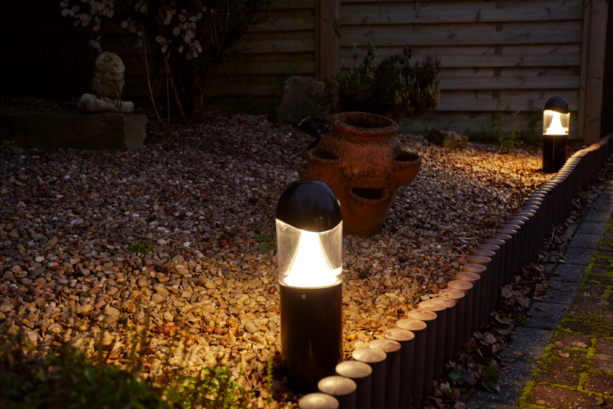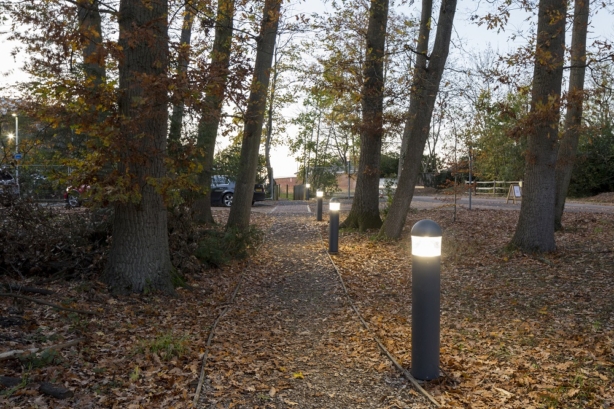
We are a leading manufacturer of quality internal and external lighting products for commercial, industrial and retail applications.
View all productsAt Ansell Lighting we design and manufacture an extensive range of luminaires for a diverse number of sectors and applications. Whatever the shape, purpose or style of your space, we have a lighting solution.
View all sectors & applicationsWe are a leading manufacturer of quality internal and external lighting products for commercial, industrial and retail applications.
Welcome to Ansell lightingWe are here to answer any questions you may have, help you find a stockist or speak to a local member of our team.
OCTO delivers the complete smart lighting package to transform the efficiency and ambience of commercial and residential spaces.
Find information regarding our product warranty, product data downloads and FAQs regarding lighting and technical terms. Here you will find support with training CPDs as well as useful lighting design and LED strip calculators.
How to light outdoor spaces when bats are a consideration
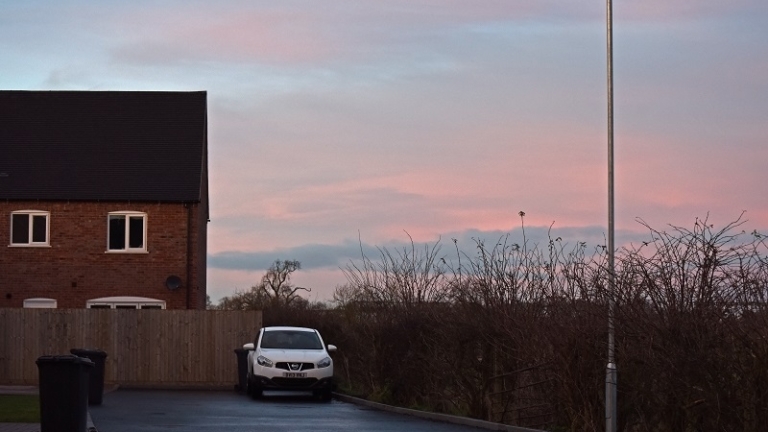
I would suggest that everyone who reads this article is well aware of the current shortage of housing stock within the UK and in an attempt to fulfil the requirement for the provision of more housing, the construction of new residential homes is moving outwards from the towns and villages into the countryside, and with-it, the requirement for the installation of exterior electric lighting to illuminate the streets and the residential home. This situation is not an ideal scenario for the wildlife living in these locations and especially those species which are known to be nocturnal, being active during the hours of darkness and one of these species is the bat.
At this point, I suggest that it would be somewhat beneficial to view this editorial in four separate sections, firstly in providing some background information around bats and their habitat, secondly in considering the legislation surrounding the protection of bats and their roosts, thirdly in looking at the different lighting considerations available to the installer, and finally, the actual installation when asked to provide exterior lighting within these areas.
The Bat
Bats are the only true flying mammals, warm-blooded and they are long-lived, intelligent with a complex social life. Here in the UK, there are around 17 species of bats, all of which are small in size. Bats have evolved some unusual features which are mainly connected with their ability to fly, where their wings are formed from a web of highly elastic skin stretched over greatly elongated finger bones, the legs and tail. The bat’s thumbs remain free to help them to cling on when roosting. All bat species are nocturnal, which means resting in dark conditions during the daylight hours and emerging at night to feed. Many species of bats are known to sample the light levels before emerging from their roost, and then only emerging for their night’s hunting when the light intensity outside reaches a critical level after the sun has set.
Another point to consider is that insects are generally attracted to light and the lit environment, something well known to all, where a window is left open to a well illuminated room at night. By providing well illuminated areas which attract insects, could result in adjacent habitats having a reduced number of insects, something which could further impact on the ability of the light-avoiding bat population the opportunity to feed.
The Legislation
All the various species of bats are protected by the Wildlife & Countryside Act (1981) (1981 Chapter 69) (as amended) and all the species of bats are also protected by SI-1994/2716, The Conservation (Natural Habitats, &c.) Regulations 1994, as amended by SI-1997/3055, SI-2000-192 and SI-2007/1843, being applicable for England, Wales and Scotland. These regulations have been consolidated and updated under SI-2010/490, The Conservation of Habitats and Species Regulations 2010 and as a result of this new legislation, the 1994 Regulations will no longer extend to England and Wales, though it will continue to extend for use within Scotland. For Northern Ireland, SI-1994/2716, The Habitats Directive continues to be implemented in Northern Ireland by the Conservation (Natural Habitats &c) Regulations (Northern Ireland) of 1995.
The above detailed legislation makes it illegal to either kill, cause injury to, capture or disturb, the bat population, obstruct access to the roosts, or damage and/or destroy the bat roosts.
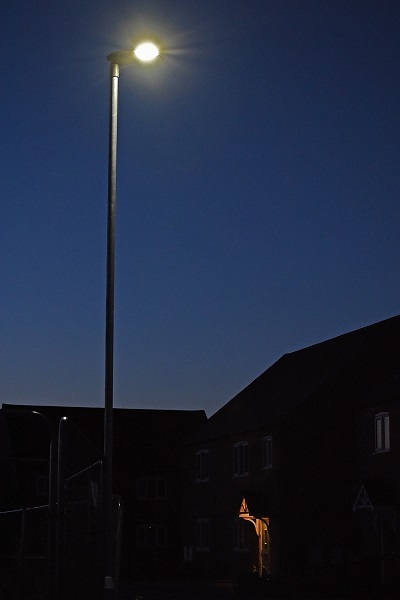
The Lighting Considerations
Having offered some detail on the habits of the bat and the legislation in place to protect the species, the next consideration is that of the external lighting, remembering that lighting can disrupt the normal 24-hour pattern of light and dark for bats with this situation being likely to affect their natural behaviour. Lighting installed within the vicinity of a bat roost, which is deemed to cause disturbance to bats or their roost, may constitute a legal offence and as such, it is important that the appropriate authority of Natural England, Countryside Council for Wales, Scottish Natural Heritage or the Environment and Heritage Service of Northern Ireland is consulted and allowed time to provide advice on possible lighting proposals for the siting of lighting equipment in the vicinity of bats and their roosts prior to any installation being undertaken by the electrical contractor.
Any electric lighting positioned within the vicinity of a bat roost or adjacent to the access point will potentially delay the bats from emerging from their roost after dark, which will shorten the duration of time available for foraging for food and, any bright light may also reduce the social flight activity, possibly causing bats to move away from the illuminated areas to an alternative dark area, which may ultimately create significant disturbance resulting in the bats permanently leaving the roost.
It is worthy of stating, that for residential homes, the installation of lighting generally requires no planning application, however the illumination provided should stay within the within the confines of the property and the type and location of any equipment providing illumination is wholly dependent upon the requirements of the householder. It is important to note that the legislation discussed above is still applicable. Residential lighting is usually installed for the reasons of providing security to the home and for the owners to enjoy the outdoor spaces during the times of darkness, however for some buildings, and certainly those which are listed, a planning application may be a prerequisite requirement of the development.
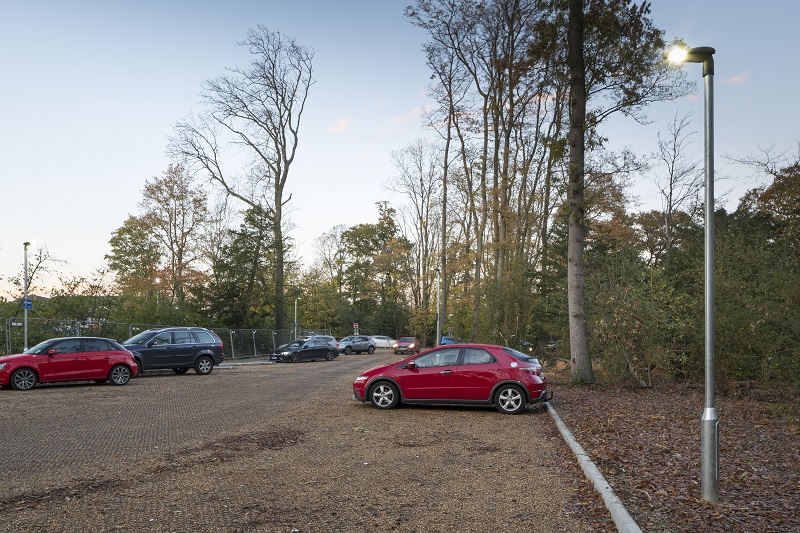
The Lighting Installation
Before considering the installation of any lighting equipment, I would suggest that the first question being asked of the owner, is that of whether or not, the installation of exterior lighting is actually a requirement. If not needed, then do not illuminate, however lighting may be required within some areas, such as for safety and security, and if it is known that a bat population is located, then the appropriate bat safety group should be consulted in order that they can assess the situation.
A survey is conducted to determine the sites used by bats, which can include their hibernation roosts, and will provide details on the numbers and times of the emergence of bats after dark. An activity survey will offer information on the key areas used for foraging and commuting back and forth to the roost and will enable predictions of the impact of any proposed lighting installation on foraging, commuting and swarming behaviour.
For the lighting engineer, who’s task it is to provide a solution to illuminate the external areas of the application, it is important that the pre-development bat survey, conducted by the bat group, is undertaken prior to the design being calculated, so as to allow the designer access to the information gained so as to focus on the elements of the bat habitat and the areas currently and potentially being used by bats. This will allow the lighting designer to create a solution which illuminates without producing light spill into other areas that may affect the bat population.
In considering the location of lighting fittings, the bat roost, as well as including the access points, should NOT be directly illuminated under any circumstances.
If it considered absolutely necessary to illuminate a building known to be used by roosting bats, such as for public safety, the lighting installation will have a specific requirement to be appropriately controlled in order that the lighting can be switched off just prior to the normal emergence time of the bat population, by using the information gained from the previously conducted survey. It is also to remain off during the peak bat activity times and for the summer months, between May and September, the external lighting in the areas of a bat roost should NOT be activated to illuminate the area after around 20.30 hours.
Much of what has been documented about exterior lighting in the vicinity location of bats and their roosts, was written some time back and the proposals for lighting solutions were based upon the lighting technologies available at that time.
Suffice it to say that the lighting engineer should not provide excessive lighting, maintaining the levels of illumination as low as the guidelines will permit and, certainly not looking to provide any form of illumination directly towards the bat roost whilst also looking to avoid the illumination of ecologically sensitive areas. It is important to avoid using reflective surfaces in close proximity to the lighting equipment as these can have an impact on the installation by creating reflected light where not needed or more importantly, where the bats are located. Finally, if the lighting is not required to be installed within all areas of the application, then simply, do not illuminate these areas.
The completed lighting solution should be considered and assessed alongside the bat group survey to inform on the impact prediction and mitigation process, taking account of the roost locations and exits, the foraging sites and the commuting routes to and from the roost, as well as any potential alternative routes.
Finally, in completing this editorial, there are a few points worthy of consideration, starting with thinking seriously about retaining the services of a competent lighting engineer, such as those based at Ansell Lighting, as it is they, who will apply the principals required to offer a lighting solution which meets the client’s requirements and in offering the right light, in the right place at the right time with the right level of applied control.
Once the lighting has been installed as specified, the levels of illumination should be measured on site to provide confirmation that the installation is as designed in complying with the requirements discussed previously and this should form part of the subsequent presence and absence roost characterisation survey. Light level readings should be taken at intervals throughout the emergence period of the bat species and recorded for the period of time when bats normally leave the roost, as this is considered when they are most likely to be affected by light disturbance.
Any produced design, shall, wherever possible, minimise the unwanted distribution of the illumination so as to ensure that only the target areas are illuminated and in doing so, it is important to consider the beam distribution pattern of the selected lighting fitting in meeting this requirement.
If lighting is to be installed at height, either on columns, supplied by others, or onto a building structure, it is important to consider an appropriate mounting height as installing at low level may be considered the optimum solution, however in doing so, the luminaire may be required to be inclined to a high angle in order to provide the horizontal illumination of the entire space, resulting in possible light spill and unwanted glare, whereas installing at a higher height may allow the fitting to have a lower degree of inclination, allowing for a more accurate light beam distribution pattern with reduced or minimal light spill.
Limiting the times of use for the lighting through the installation of appropriate lighting control is of very high importance and can be an effective way of providing illumination when needed, whilst also minimising or removing the light to some or all areas at times when the bat population is intending to leave the roost. For public areas such as that of a car park, it would seem a fairly pointless exercise to illuminate the area when the area is either closed or empty, and this is also considered as being a waste of energy usage.
In closing, remember bats are a protected species and with legislation in place to protect them and their environment, the installation of lighting installation needs to be designed and implemented with extreme care and this is best achieved by contacting a lighting designer at Ansell Lighting to assist in this process.
You Might Also Be Interested In...

